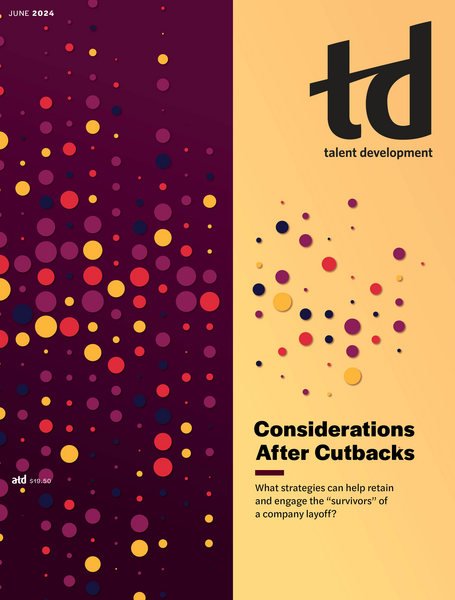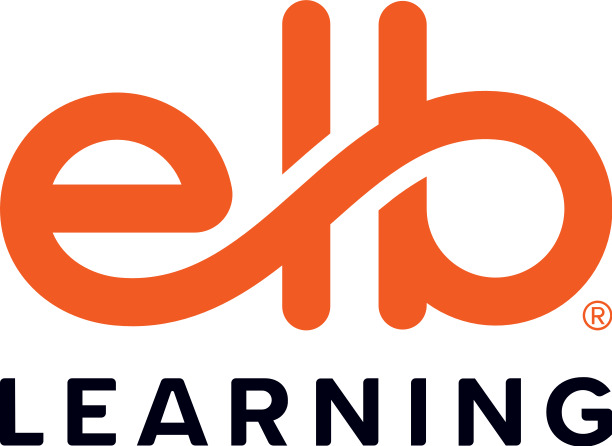TD Magazine Article
Assessments, June 2024
The word assessment can mean different things in the context of talent development.
Published Mon Jun 03 2024
An assessment can measure learners' comprehension of a topic before and after a training event. An assessment can also be a tool that employers use to determine whether a job candidate is a good fit for a particular role or the organization itself. Further, an assessment can determine what skills an employee has. The vendors on the following pages offer insights on all the above.
How'd we do?" is a question talent developers want to know the answer to at the end of an event. But another great question is "How are we doing?" Because it's not just the destination; it's the journey too.
Most of our attention is focused on the first question. Models like Donald Kirkpatrick's—measuring reaction, learning, transfer, and impact—and Jack Phillips's emphasis on return on investment can help us understand the outcomes of a program. These are known as summative evaluations.
Formative evaluations check progress. Like the GPS in your car, formative evaluations let you know you're on track and help you get back on track if you've gone off course. Quizzes, feedback surveys, and participants' performances are all examples of checking progress.
But what if our program is somewhere we didn't anticipate? Should we course-correct? Or are we in a better place? Michael Quinn Patton's Developmental Evaluation provides guidance on doing these checks. New programs and initiatives particularly need this feedback, and it can't wait until they've concluded.
"I may not have gone where I intended to go, but I think I have ended up where I needed to be." —Douglas Adams, author of The Hitchhiker's Guide to the Galaxy.
Not all assessments are created equal. While they're used by a majority of organizations in recruitment, many fall short by offering generic evaluations that fail to consider the unique requirements of each role and the organizational culture.
Job-specific assessments address this challenge by offering job templates customizable to mirror the unique key performance indicators, responsibilities, and cultural fit of a role. This level of granularity not only enhances the fairness and accuracy of the talent selection process but also safeguards employers from potential legal pitfalls associated with nonspecific assessments.
The implications of this tailored approach extend beyond recruitment, touching every facet of the talent life cycle, from development and coaching to leadership, engagement, succession planning, and organizational culture. This method provides managers with invaluable insights into each employee's why, in the Simon Sinek sense, enabling a deeper understanding of what drives their team members.
The actionable data from such assessments empowers better decision making, allowing leaders to align strategies with individual strengths and motivations. By harnessing detailed behavioral data, organizations are equipped to create environments that not only attract talent but also foster retention and nurture growth, ensuring a mutually beneficial alignment between individual aspirations and the collective mission.
An effective talent assessment strategy is essential for fueling skills-based organizations, prioritizing a diverse range of skills over traditional role-based positions. Here are some tips:
Define organizational, core, and business-specific capabilities. A comprehensive capability framework supports broader business functions that look to capabilities required for a range of roles.
Create a 180-degree capability assessment strategy measuring current and potential roles. Implement a skills-based capability assessment strategy to measure current roles and potential future roles, enabling individuals to cherry-pick additional capabilities beyond their current domain.
Assessment is an ongoing journey, not a single event. Facilitating ongoing check-ins will help individual behavior change by keeping development competencies front of mind.
Leverage artificial intelligence to gain deeper insights. AI streamlines and improves the quality of analyzing group data or interpreting individual data for feedback by plotting groupwide strengths and talent gaps.
Data is key—have the tools to meet organizational development needs. Access to trends in large volumes of data is crucial to the success of any transition to a skills-based organization.
According to a Deloitte study, skills-based organizations are 92 percent more likely to innovate, 52 percent more productive, and 17 percent more profitable than their peers who don't emphasize such initiatives.
Learning assessments help determine success with learning outcomes and objectives. Writing effective assessments is essential for gathering data about knowledge retention and behavior change. Instructional designers can now use artificial intelligence as a secret weapon for insightful assessments.
When using AI, remember it's not a stand-alone entity capable of making independent decisions—it augments human intelligence based on the knowledge and context we provide.
Before beginning a conversation with an AI tool such as ChatGPT, identify the business problem or context the training aims to address. Next, share the business needs and training content as well as other relevant information (company details and specific challenges). Then, ask it to create a set of questions that will analyze whether a learner understood the material.
Working with AI is an iterative process. You'll need to dialogue with the AI to fine-tune your assessments. You can assign personas to the AI that will offer various perspectives (e.g., your learners, your CEO, an instructional designer, the customer, etc.). This will ensure that you're considering all the nuances of the content and business needs.
Pro tip: Once satisfied with the AI-generated solution, create a prompt that encapsulates the entire conversation, allowing for easy replication.




